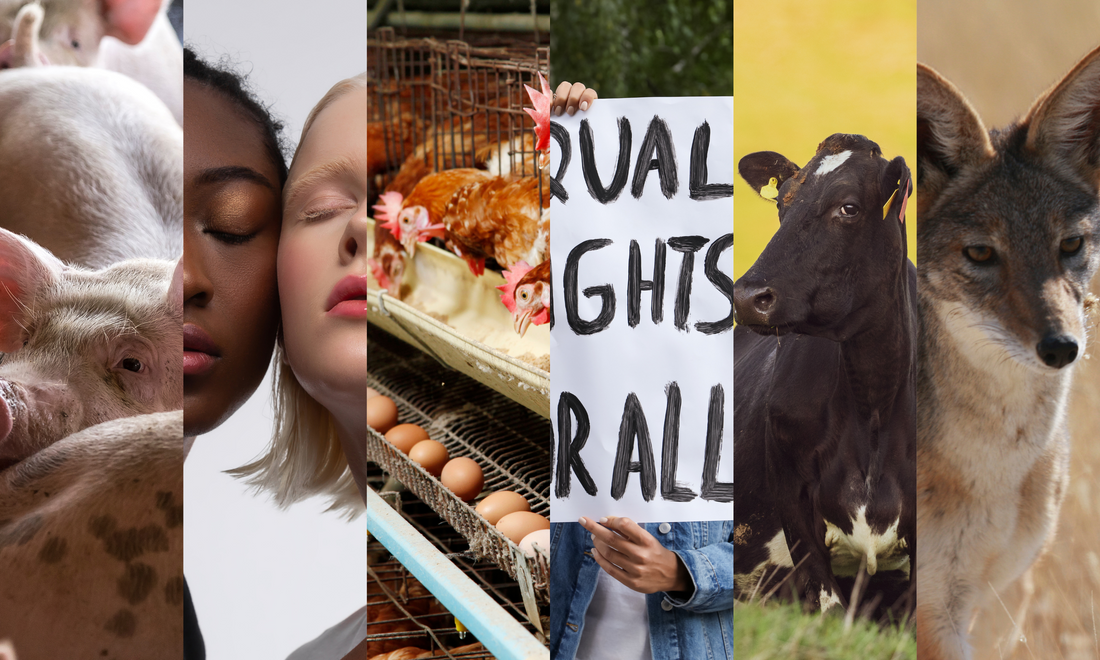
Intersectionality and the Rights of All Animals
Share
Imagine living in a world where all forms of oppression are interconnected. Where violence against a vulnerable group does not exist in isolation but as part of a system that exploits and discards those without a voice. This is precisely what intersectionality reveals to us.
This concept, coined by legal scholar Kimberlé Crenshaw in the 1980s, helps us understand that different forms of discrimination—whether based on gender, ethnicity, social class, or other categories—are deeply connected. And when we talk about animal rights, intersectionality becomes even more urgent. Because speciesism is just another layer of this web of oppression.
Human history is full of moments when the exploitation of living beings was justified by tradition, profit, or convenience. The same system that subjugated women, enslaved people, and oppressed marginalized communities is the one that today industrializes the killing of billions of animals every year. If we fight against any kind of injustice, we must fight against all.
By refusing to be complicit in animal exploitation, you are challenging a structure of domination that affects not only animals but also people in vulnerable situations. Studies show that slaughterhouse workers have high rates of depression and post-traumatic stress disorder. Low-income communities, often racialized, are disproportionately affected by pollution from animal agriculture. And women exploited in the wool, dairy, and egg industries face degrading working conditions.
Let’s be clear: talking about intersectionality does not mean shifting the focus away from animals. It means broadening our vision, understanding the connections, recognizing that violence knows no boundaries, and that the justification for exploiting one living being is the same used to exploit others.
If you care about fighting for a more just world, you need to include the defense of animals in your activism. Activism cannot be selective. The true revolution is total and leaves no one behind.
Veganism is Justice.
Jose Alberto Oliveira
VEGANS FOR LOVE
